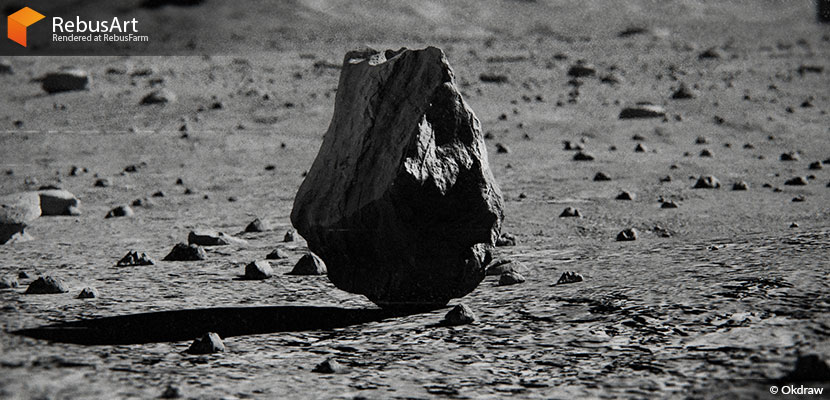
"That is one small step for a man…". While we are not so sure about the giant leap for humanity part, this month’s feature certainly marks a first for us at the Rebus Render Farm, as we are thrilled to bring you some bona fide extraterrestrial archviz content. That's right, the talented team at Okdraw Studio flies us to the moon to explore an abandoned lunar base in their animated short film 'Terra'!
Join us for lift-off, as co-founders and art directors Hugo Ferreira and Pedro Texeira break down an archviz project of cosmic proportions!
Hi guys, thanks for joining us! To start things off, please introduce yourself to our readers.
Hugo: Hello, and thank you for this opportunity to talk more about our work. My name is Hugo Ferreira, I am a 36-year-old self-taught CG artist and art-director. I’m an architect by trade, and a passionate musician in my free time. I was first introduced to CGI as a student, and it stuck with me ever since. In 2013, I had the chance to work on an exhibition with a couple of international CG artists, and it was then that I realized I could turn this hobby of mine into a career. Thinking about it now, none of it was ever planned out, but here I am.
Pedro: Hi there, I am Pedro Texeira, 35 years old, and I have a degree in design, with a specialization in product design. However, towards the end of my studies, I already knew this wasn’t what I wanted to do for a living, and I also felt I did not excel at it. I was more passionate about drawing and playing guitar, but digital media and computers were an even bigger fascination. I therefore enrolled in some post-graduate courses in 3D software to expand my communication skills.
Around that time was when I started thinking of CG as a career option, and I never looked back since. The main reason I stuck with it all these years is how multifaceted this job is, incorporating different fields such as product design, architecture, photography, cinematography, music, and storytelling. Every project is unique in terms of aesthetics and challenges, and I am all here for this variety!
Please tell us about Okdraw Studio! When and under what circumstances was the studio established?
Okdraw Studio: We have been friends since high school. Together, we have played in several bands and shared rehearsal rooms, guitar amps, and nasty tour vans since we were 16. After college, we discovered another mutual interest in CGI. Okdraw was established in 2013, in the wake of the global financial crisis; there were no decent jobs in architecture or design in Portugal at the time. We were both working freelance, and eventually decided to join forces. Those were scary yet happy times, with no money, but seemingly limitless possibilities ahead of us. Today, we are a team of five architects and designers: Catarina, Gonçalo, Marco and us. We are trying our best to keep the spirit from the early days alive.
What is the story behind the name Okdraw?
Okdraw Studio: The name is a reference to Radio Head's seminal album 'Ok Computer', which deals with living in a technological world. Drawing is one of humanity’s oldest forms of artistic expression, dating all the way back to the Paleolithic. Despite living in the digital age, we want to continue to preserve this ancient art form. The name Okdraw contains this very intention.
What services do you provide and who are your clients and target markets?
Okdraw Studio: We focus on helping architects and developers with the visual communication of their projects, specifically through still images and short animations. Our work is split between architectural presentation, competitions, and commercial developments. Nowadays, we are lucky to work with clients from Portugal, France, Switzerland, Netherlands, and the U.S. This diversity requires us to try new and different approaches instead of always following the same recipe, which we appreciate a lot.
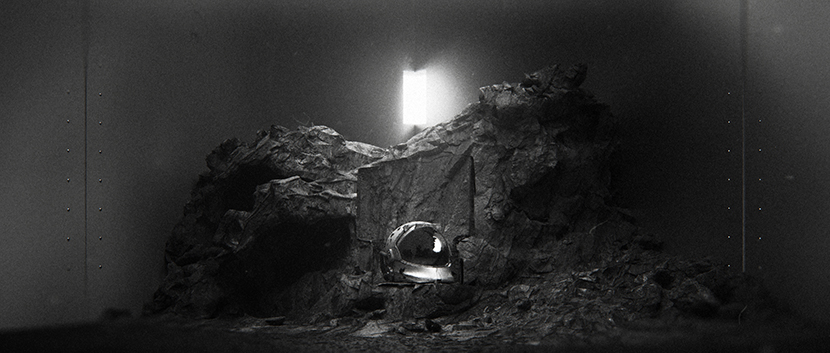 Although human presence is not seen, it is strongly felt throughout the film.
Although human presence is not seen, it is strongly felt throughout the film.
What are your main responsibilities and daily tasks at Okdraw Studio?
Okdraw Studio: Since we are a small team, the process is mostly horizontal. Usually, the art director also functions as the project manager, so when presenting a project to the team, they already have some direction, be it a specific plan or a general idea. Every Monday, the whole team comes together for a weekly meeting to exchange feedback and share ideas, so everybody gives input. As art directors, we try to direct this flow of ideas, then choose and develop the most promising ones further.
How would you describe your approach and overarching vision as an archviz company?
Okdraw Studio: To us, archviz is primarily a tool to communicate. With every image we produce, we aim to convey an idea. The technical part of our work might become fully automated one day, but there will always be the need for communication.
Is there a specific design philosophy or architectural school of thought you adhere to? What inspires you as 3D artists?
Okdraw Studio: We do not follow a specific philosophy. We like to believe that we are hardworking and hunger for diversity. We therefore try to be as open as possible when looking for inspiration. Given the right circumstances, it can come from everywhere and everything: photography, cinema, illustration, paintings, a walk in the woods, a building, even a crappy snapshot of my three-year-old self eating ice cream.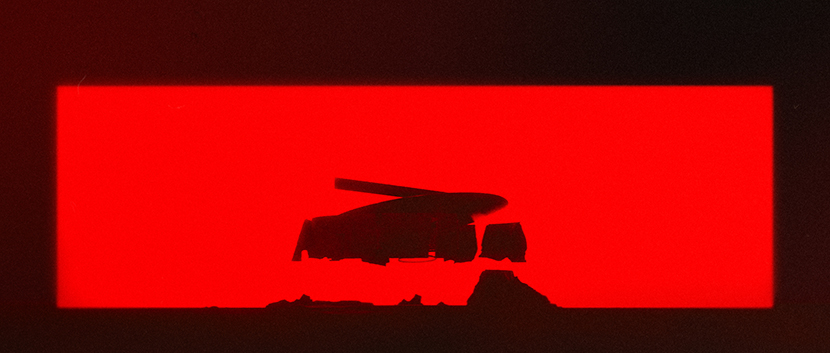 Bursting with artistic qualities, ‘Terra’ is so much more than a glorified tech demo.
Bursting with artistic qualities, ‘Terra’ is so much more than a glorified tech demo.
Let us talk about your work in more detail. Earlier this year, you released the short film 'Terra', a sci-fi story of an abandoned lunar base. Can you first describe the circumstances that lead to the creation of this project?
Okdraw Studio: 'Terra' is Okdraw’s first short film. It was written, directed, and produced entirely in-house as a passion project. We had been interested in video animation for the longest time, but since we do not receive these type of jobs too often, we decided to just do it ourselves. We saw this as an opportunity for experimentation, a chance to study other media, software, and of course to realize our own artistic vision.
How did you come up with the original idea, and how would you describe the basic concept and your artistic vision for the film in your own words?
Okdraw Studio: Since music is so close to our hearts, we thought it would be nice to merge cinema, architecture, and music, hoping it all to make sense in some way. We don’t recall the exact beginnings, but we remember basic concepts such as "emptiness", "deconstruction", and "movement" emerging when listening to the song 'E' by MUAY. To better capture these potential ideas, we found it imperative to create a true narrative for the film, and since we are fans of dystopias and, we early on came up with the following story outline:
Three years after the first manned mission to the moon, Michael Collins proposed a more permanent return to the gray surface. Between 1972 and 2021, Michael Collins inhabited the moon by himself, using lunar matter to build structures, and regularly transmitting reports of his experiments as well as his condition to Earth. In 2021, the reports suddenly ceased. This is an idea of what might have been the dismantling of the structures left by Collins.
What were some of the challenges you had to overcome and how long did it take you to complete the project?
Okdraw Studio: Curiously enough, the most difficult part was probably working free from the constraints of a client: with endless possibilities, it is hard to establish boundaries. Between the music, story, and visuals, it was not easy to strike the right balance. Occasionally, we went too far while experimenting and had to dial it down a notch.
It took us six months to complete 'Terra', and even though it was not a paid job, we all took it very seriously, working rigorously on the film in between other projects.
 Concept art for the structures built by Collins during his prolonged stay on the moon.
Concept art for the structures built by Collins during his prolonged stay on the moon.
At first glance, the subject matter, if not the medium itself, seems like a big departure from your usual archviz work. Why did you decide to leave your comfort zone and dedicate yourself to such an elaborate project?
Okdraw Studio: One of the coolest things about our profession is the opportunity to work on different projects, with different scales, different clients, and different environments. This variety is challenging, but at the same time allows for a lot of experimentation. With 'Terra', we wanted to portray architecture in a way that is rarely found within our field. It made for an equally challenging yet fulfilling journey, and we learned a lot about other types of media and communication.
On closer inspection, there are a lot of commonalities between the film and your work as an archviz studio. From the lunar base to the extraterrestrial surface of the moon, architecture functions as the film’s protagonist and the carrier of its narrative.
Can you tell us more about your approach to visual storytelling and how much it differs from more conventional archviz projects of yours?
Okdraw Studio: We understand that architecture always has something to say. Regardless of the medium, a building always acts as a character in a wider narrative, composed of the environment, lighting, human scale and function. Our job then is to take control of this narrative to tell a unique and engaging story. With 'Terra', we pushed this idea even further, and yet, it did not deviate all that much from our usual approach to archviz.
As a work of fiction set on an inhabited moon, you had a lot of creative liberty in designing. How challenging or rewarding was it to create all the natural and man-made assets?
Okdraw Studio: Creative liberty can be the sweetest nightmare, because the possibilities are almost infinite. To set at least some boundaries, we early on established the importance of coherent (visual) storytelling. Even though we had a lot of creative freedom, we wanted our designs to follow the logic of this world. For example, since Collins had been living on the moon for such a long time, he would probably build and modify his base by using materials available to him. This idea is reflected in the design by the inclusion of natural resources such as moon dust and rocks, and parts of his space shuttle, culminating in a structure that is both primitive yet high-tech.
We also wanted to tie the film to its historical setting, so a closer look at the assets reveals a mix of real and fictious memorabilia, like the NASA archive, movies, and even photos of Abbey Road Studios.
Seeing all these ideas take shape and finally come together to form a coherent whole was incredibly rewarding. From architects, landscape designer and asset creators, the entire Okdraw team came through for 'Terra'!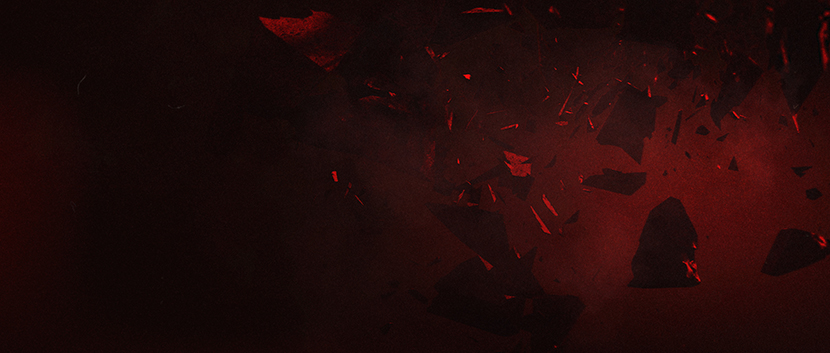 The use of the red color in the film was inspired by the live shows of the band MUAY.
The use of the red color in the film was inspired by the live shows of the band MUAY.
Originally written and recorded as the live soundtrack for a screening of Alexander Dovzhenko’s silent film classic 'Earth', the score by MUAY is essential to the dramatic composition of the film, with the music and the visuals complementing each other through its entire runtime.
How much did the music influence the film and vice versa?
Okdraw Studio: The music was the starting point, it guided our creative process through tempo, rhythm, pace, transitions, and the different feelings it invoked. Breaking down the music into basic concepts like "emptiness", "movement", "explosion", "tension", and "release" helped us structure the film and figure out what each part should be about. The music thus defined the main narrative as well as certain aesthetic decisions, for example, the idea of the 70s space age theme is closely linked to the use of synthesizer sounds.
Since the music was originally written to score Dovzhenko's film, and subsequently inspired us to create our own visuals, we like to think of 'Terra' completing a creative loop, and endless circle, if you will.
Hugo, as a member of MUAY, you were directly involved in both the film and its soundtrack. Can you talk a bit about this multidisciplinary approach and how you combined these two passions of yours?
Hugo: Music has always played a role in our professional lives, especially at the beginning of our careers. I vividly remember the days of listening to Pink Floyd’s 'Live at Pompeii' while struggling to do post-production on our laptops at 2.00 AM.
Me personally, I have found that I need to play and write music to clear my mind – it is like going to the gym, only for the psyche. There are some similarities between music, architecture, and archviz, such as composition and balance. However, music has a certain room for error and improvisation that I cannot find in my daily work as a CG artist and art director. The act of spontaneously creating something with others, communicating only through the language of sound and music, is exciting and fulfilling.
MUAY is a duo made up of by the talented Nuno Sousa and me. He is a long-time friend of mine, with whom we also share our studio space, so arranging rehearsals and sharing ideas is easy.
Having just touched upon some potential cinematic influences, talk to us a bit about the general aesthetic of the film, and your use of color, lighting, camera work, and editing.
Okdraw Studio: We studied cinematography to better understand lens, color, and how these aesthetic decisions influence the narrative and storytelling. Shooting in black-and-white was an artistic homage to the 70s, but it also allowed us to work within our limitations on our very first animation.
As we were not used to work with this aesthetic, we submerged ourselves in movies like 'The Tragedy of Macbeth', 'Lighthouse', and 'Sin City'. We also consulted the photography of Saul Leiter and Sebasião Salgado. All of these references helped us to understand how, in the absence of color, we can use contrast as a shaping, and eye-guiding tool. Consequently, lighting direction, camera movement, and post-production went hand in hand at all times.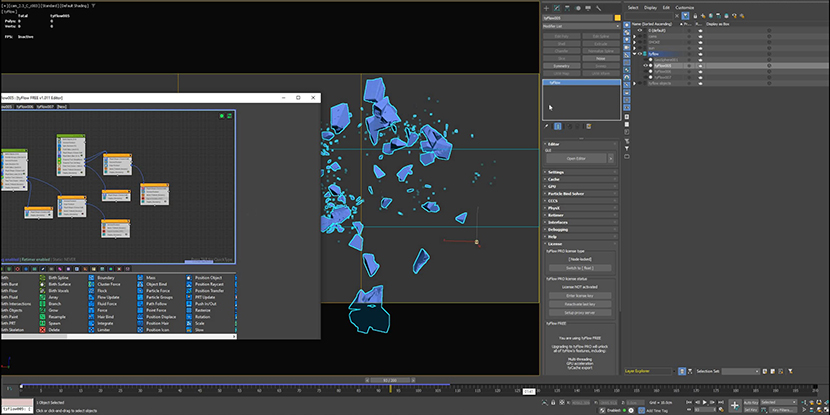 A look behind the scenes: the team used tyFlow to simulate some of the rock physics.
A look behind the scenes: the team used tyFlow to simulate some of the rock physics.
What software did you use to create the film? Any plug-ins you found particularly helpful?
Okdraw Studio: We wanted to implement as much of our daily work flow as possible, so our setup did not deviate much from the industry standard. We used 3ds Max with Corona Renderer, and Adobe After Effects and Premiere for editing and color correction.
Our approach was straightforward, with us solving problems as we encountered them and embracing limitations as part of the creative process. We were more concerned with the results than with realistic physics – if it looked good, me would move on. All the animation, camera work, and lighting were done by hand. The only exceptions were the rock collisions, explosions, and cracks, for which we used the Phoenix FD plugin and tyFlow to simulate various effects.
Where and when did the film premier and what feedback did you receive, both initially and since its wider release?
Okdraw Studio: The film premiered at the 'InBetweeness' archviz festival in Portugal in February. We had already been invited to attend, so we thought it would be a great opportunity to publicly present our project to the archviz community. The reception was overwhelmingly positive, with people commenting on the aesthetics, the narrative, and the overall uniqueness of the project within our field. All in all, we were super happy with this reaction.
What is one thing you yourself have learned from this project that you can share with us?
Okdraw Studio: Side projects like this one always help us better understand both our limitations and potentials. Working on something on your own, driven only by passion, is a great way to refresh your creativity!
Can we expect more films and animations from Okdraw Studio in the future?
Okdraw Studio: Hopefully yes, although we don’t know if we will do more films or animations anytime soon. We definitely want to keep experimenting and pursue things that we find interesting, whenever we can find the time and opportunities.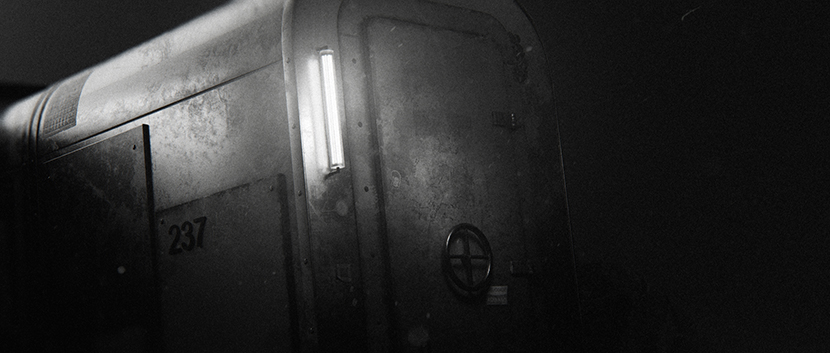 While not exactly rocket science, Okdraw Studio’s first foray into animation proved challenging nonetheless. We look forward to the next mission!
While not exactly rocket science, Okdraw Studio’s first foray into animation proved challenging nonetheless. We look forward to the next mission!
Please tell us about your experience with RebusFarm. Is there anything you especially like about our service?
Okdraw Studio: We are very glad that RebusFarm believed in 'Terra' and joined us on this adventure. These types of projects are very time-consuming and resource-intensive, and since this was a non-commercial undertaking, your support meant the world to us. Our rendering experience was smooth and fast, and therefore integral in completing everything in time for the premiere.
In closing, is there anything else you want to say? Any plugs, shoutouts or present or upcoming projects you would like to mention?
Okdraw Studio: We cannot close this interview without thanking our team: Catarina, Gonçalo, and Marco. Not only are they wonderful people, they are also extremely talented; hand them some eggs to break and next thing you know they are whipping up a dessert worthy of a Michelin star.
Thanks once again to RebusFarm for your support and dedication to this project.
Hugo, Perdo, thank you so much for taking the time and all the best in the future!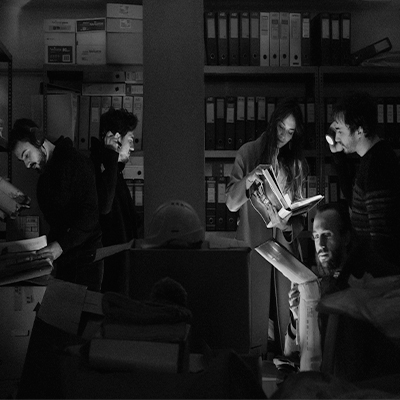
About the studio
Founded by high school friends Hugo Ferreira and Pedro Texeira in 2013, Okdraw Studio is a high-end architectural visualization studio based in Portugal. Featuring a multidisciplinary team of architects, designers and CG talent, Okdraw aims to communicate the visions of their international client base through unique ideas and striking visuals.
